$90 fixed day time cost! $120 fixed night time cost! No surprise expenses!
The Sunshine Coast Snake Catcher is available seven days a week, twenty-four hours a day!
Phone ☎ 0432465156 Anytime.
Reliable, efficient, fully licensed, fully insured with over fifteen years real local experience.
If I cannot catch it then no one can.
At A Glance
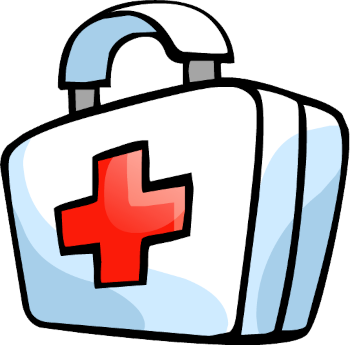
If you get bitten by an Australian snake :
• Stay Calm
• Call for help if possible
• Don't give alcohol
• Don't tourniquet, cut, suck or wash the wound
• Apply a pressure bandage to the entire limb
• Mark the bite site
• Call for help if you have not already done so.
• Stay Calm
• Call for help if possible
• Don't give alcohol
• Don't tourniquet, cut, suck or wash the wound
• Apply a pressure bandage to the entire limb
• Mark the bite site
• Call for help if you have not already done so.
Introduction
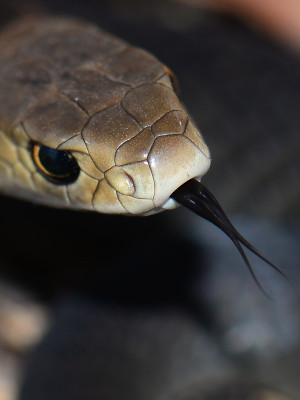
Australia is home to hundreds of snake species and the Sunshine Coast has at least 24 different species. However most species, both Australia wide and on the Sunshine Coast are not dangerous to humans and even the highly venomous species will avoid confrontation where possible. On the Sunshine Coast snakes are surprisingly common but are rarely seen. Most backyards will have a resident snake and about a third of ceiling cavities show signs of snake visitations. Despite this, snake bites are quite rare and fatalities are rarer still. However should a bite occur then the proper first aid is important as it the appropriate medical assistance. Note that this guide is for Australian snakes only, overseas snake bite treatment may vary.
Don't Get Bitten
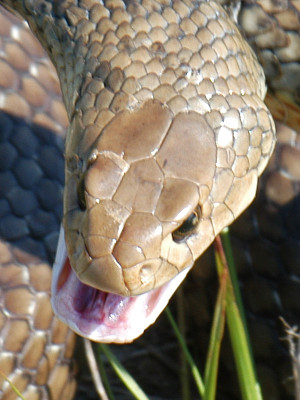
The best way to treat a snakebite is, of course, not to get bitten. Many snake bites occur by the person attempting to interact with the snake, either trying to catch or kill it. Snake can be incredibly fast when they feel that they need to defend themselves but given the chance will always retreat to somewhere safe. If you find a snake it is always best to contact an experienced and licensed snake relocator
Keep Calm
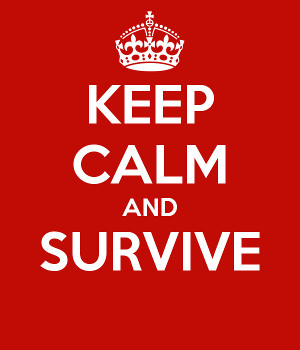
If you are unfortunate enough to get bitten then the single most important thing that you can do is remain calm. Stay calm enough to apply first aid or call for help. The worst thing that you can do is panic, run around and elevate your metabolism.
Call For Help
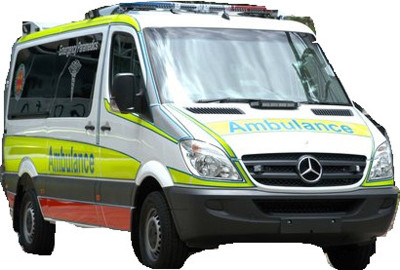
Starting the correct first aid promptly is very important. However if you or someone else can call for medical assistance without slowing down the first aid then do so.
No Alcohol
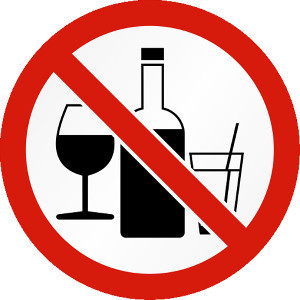
There are a number of important don'ts when it comes to snake bite. Many are left overs from now obsolete procedures and many are actually dangerous. Top of the list is do not give alcohol, it may mask the symptoms and accelerate the spread of the venom. A good rule is nil by mouth except for water.
Don't Tourniquet
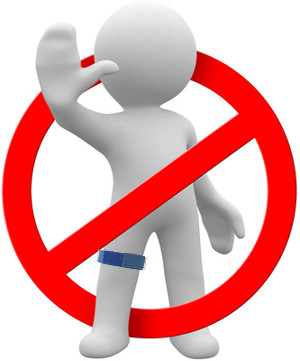
There are a number of important don'ts when it comes to snake bite. Many are left overs from now obsolete procedures and many are actually dangerous. Tourniquets, or restriction the blood flow, were the most common first aid tool used for snake bite but they have been found to be ineffective. Australian snake venom travels along the lymphatic system until it reaches the lymph nodes. Tourniquets do not sufficiently impede this flow. Worse, tourniquets can often do more damage than the actual snake bite. If left on too long they can kill the limb and then require amputation. In fact tourniquets are to be avoided in most first aid situations.
Don't Cut
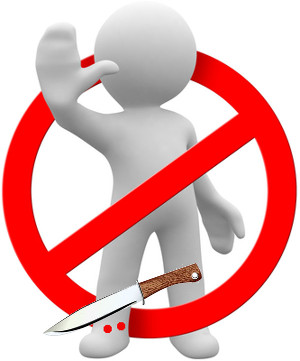
There are a number of important don'ts when it comes to snake bite. Many are left overs from now obsolete procedures and many are actually dangerous. A relic from bygone treatments is cutting the wound to let the venom out. This doesn't work as the amount of venom lost is medically insignificant. The bleeding may also wash away any venom left on top of the bite. This is important as this venom may be swabbed to determine which anti-venom to use. At best it just creates another problem for the doctor to deal with.
Don't Suck The Wound
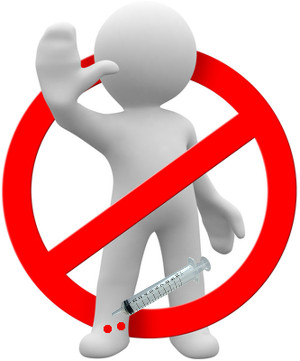
There are a number of important don'ts when it comes to snake bite. Many are left overs from now obsolete procedures and many are actually dangerous. Sucking the venom out sounds good ( and there are even devices marketed that claim to do this ) but it doesn't work. Test on these devices ( see the acknowledgements page for links ) indicate that they only remove a clinically insignificant amount of venom. They may also delay proper first aid treatment Sucking out venom by mouth is also equally ineffective but has the additional problem that it may wash off the venom residue that is used to detirmine the correct anti-venom to use.
Don't Wash
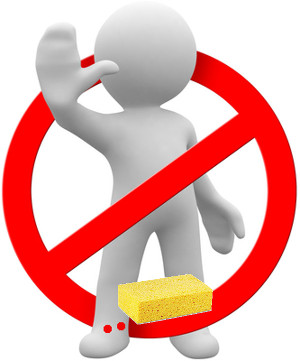
There are a number of important don'ts when it comes to snake bite. many are left overs from now obsolete procedures. Many are actually dangerous. Washing an Australian snake bite site is not recommended. WHen a person presents themselves to the emergency department of the local hospital, the staff will first try and take a swab of the left over fluid around the bite site.They are looking for traces of the venom to determine with anti-venom to use should it be required, Washing the site makes this test difficult to perform.
Leave The Snake Alone
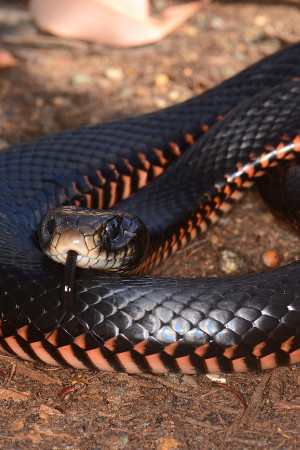
After a snake has defended itself it will, if possible, retreat and hide or leave the area. Attempts to kill or capture the agitated reptile may be dangerous and should not be attempted except by a skilled snake relocator! Medical staff DO NOT need the snake brought to them, they use the snake venom detection kit (SVDK) to determine the appropriate treatment. If you do bring a snake into the hospital it is unlikely that the staff can identify it and you risk clearing out ED should it get loose. If the snake is still an issue call a licensed relocator to have it removed safely!
Snake Bite Kit
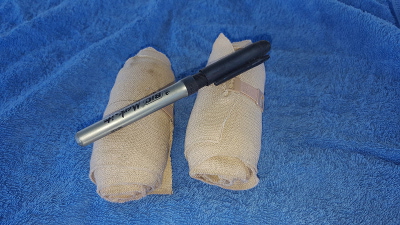
In some areas and professions it is worth carrying a snake bite kit. This is a very simple kit, two crepe bandages and a felt tip pen. The bandages are approximately $8 each. A mobile phone is also useful. Of course you need to know how to use them properly so detailed instructions on a simulated bite follow.
Start Wrapping Near Bite Site
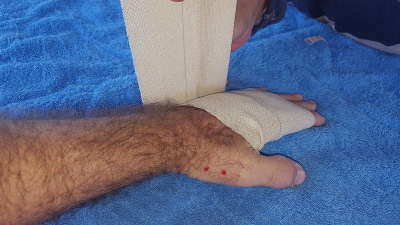
We have here a simulated bite from a snake ( OK - it's two red dots from a marker pen ). Using one of the crape bandages start wrapping the limb from sightly below the bite site. Make sure that you cover the bite site.
Wrap Tight
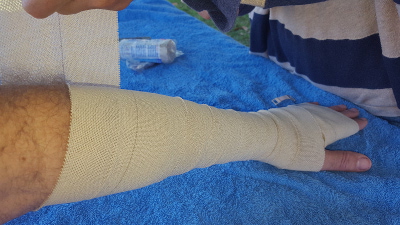
The big mistake made with pressure bandages is that they are often not wrapped tightly enough. They should be wrapped slightly tighter than a stained ankle but you should be able to force two fingers under the bandage.
Wrap The Entire Limb
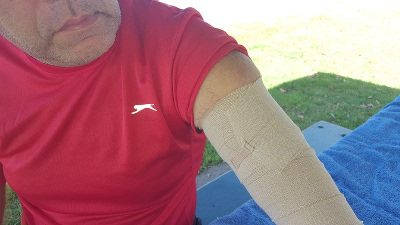
Use the entire bandage to wrap the entire limb. When you get to this stage then you have completed the basic first aid but there are a couple of more steps that increase your chances.
Wrap Twice
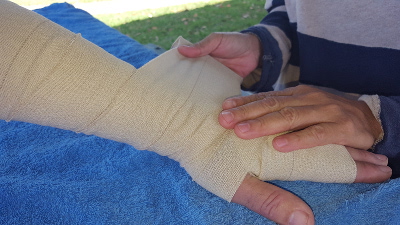
Use the second bandage to wrap the limb a second time. This time, however, start from the top and move down.
Mark The Bite Site
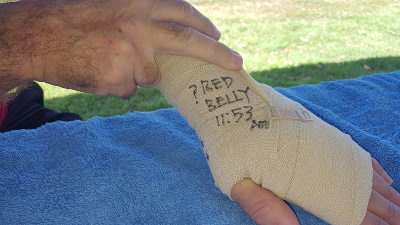
One of the important steps that is often missed is to mark the site. Here we have two black spots over the bite site. We also have put the time of the bite plus the suspected species. It is also worthwhile to write down any other information that may prove useful such as urination times.
Call For Help

By now you have stabilized the patient. Have them lay down and they to stay calm ( easier said than done ). Ideally you have already had someone call for an ambulance but if not then now is the time. It is much better that you get the ambulance to come to you rather than the other way around. driving yourself or having someone drive yourself to hospital should be only considered as a last resort.
Keep Calm

Again I reiterate that you need to stay calm. And again I say that it is easier said than done. But staying cool, calm and level headed greatly increases your chances.
At The Hospital

Finally the ambulance has arrived and taken you to hospital. There a protocols that should be followed. What should happen now is that the pressure bandage is kept on but a small section around the bit site is cut away and a venom test is performed. Blood tests are run to see if you are having any changes in your coagulants. Once the results come back then the bandage is removed and you are observed. Anti-venom will not be used unless you show symptoms that indicate envenomation. A lot of snake bites don't actually involve venom and a lot of times the envenomation isn't severe enough to warrant using anti-venom. However you will be observed for at least 15 minutes by a number of the medical staff, is no symptons show then this is whittled away to one. If severe symptoms do present themselves then it is an entirely different scenario. One or more vials of the appropriate antivenom ( or a polyvariant ) are given and the patient is observed. It after a set length of time there are no changes then a second round of antivenom is given. This is repeated until the patient has stabilized. It is often a painful and scary process. Finally the estimated incidence of snakebites annually in Australia is between 3 and 18 per 100,000 with an average mortality rate of 0.03 per 100,000 per year. That works out at around one or two a year so while snake bite should be taken seriously, if you do the first aid correctly you should make it though alive and well and with no long term affects.
Snakes of the Sunshine Coast
❭
Suburbs and Areas Serviced
❭
Safety First
❭
Services Offered
❭
Snakes and Pets
❭
Wildlife Photo Galleries
❭
Terms And Conditions
❭
Pages
❭
Snakes of the Sunshine Coast
❭
Suburbs and Areas Serviced
❭
Safety First
❭
Services Offered
❭
Snakes and Pets
❭
Wildlife Photo Galleries
❭
Terms And Conditions
❭
Pages
❭
